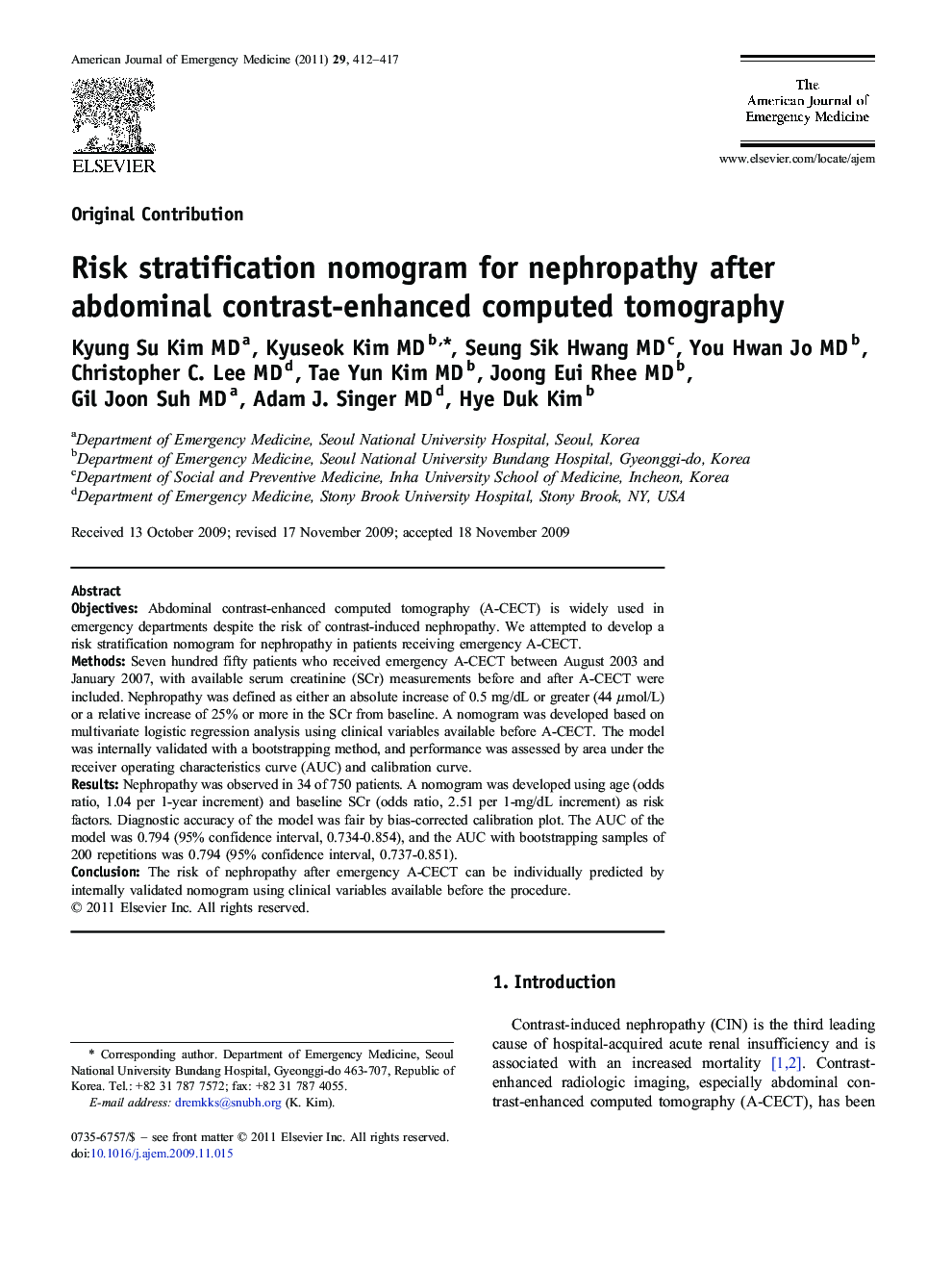| Article ID | Journal | Published Year | Pages | File Type |
|---|---|---|---|---|
| 3226284 | The American Journal of Emergency Medicine | 2011 | 6 Pages |
ObjectivesAbdominal contrast-enhanced computed tomography (A-CECT) is widely used in emergency departments despite the risk of contrast-induced nephropathy. We attempted to develop a risk stratification nomogram for nephropathy in patients receiving emergency A-CECT.MethodsSeven hundred fifty patients who received emergency A-CECT between August 2003 and January 2007, with available serum creatinine (SCr) measurements before and after A-CECT were included. Nephropathy was defined as either an absolute increase of 0.5 mg/dL or greater (44 μmol/L) or a relative increase of 25% or more in the SCr from baseline. A nomogram was developed based on multivariate logistic regression analysis using clinical variables available before A-CECT. The model was internally validated with a bootstrapping method, and performance was assessed by area under the receiver operating characteristics curve (AUC) and calibration curve.ResultsNephropathy was observed in 34 of 750 patients. A nomogram was developed using age (odds ratio, 1.04 per 1-year increment) and baseline SCr (odds ratio, 2.51 per 1-mg/dL increment) as risk factors. Diagnostic accuracy of the model was fair by bias-corrected calibration plot. The AUC of the model was 0.794 (95% confidence interval, 0.734-0.854), and the AUC with bootstrapping samples of 200 repetitions was 0.794 (95% confidence interval, 0.737-0.851).ConclusionThe risk of nephropathy after emergency A-CECT can be individually predicted by internally validated nomogram using clinical variables available before the procedure.
